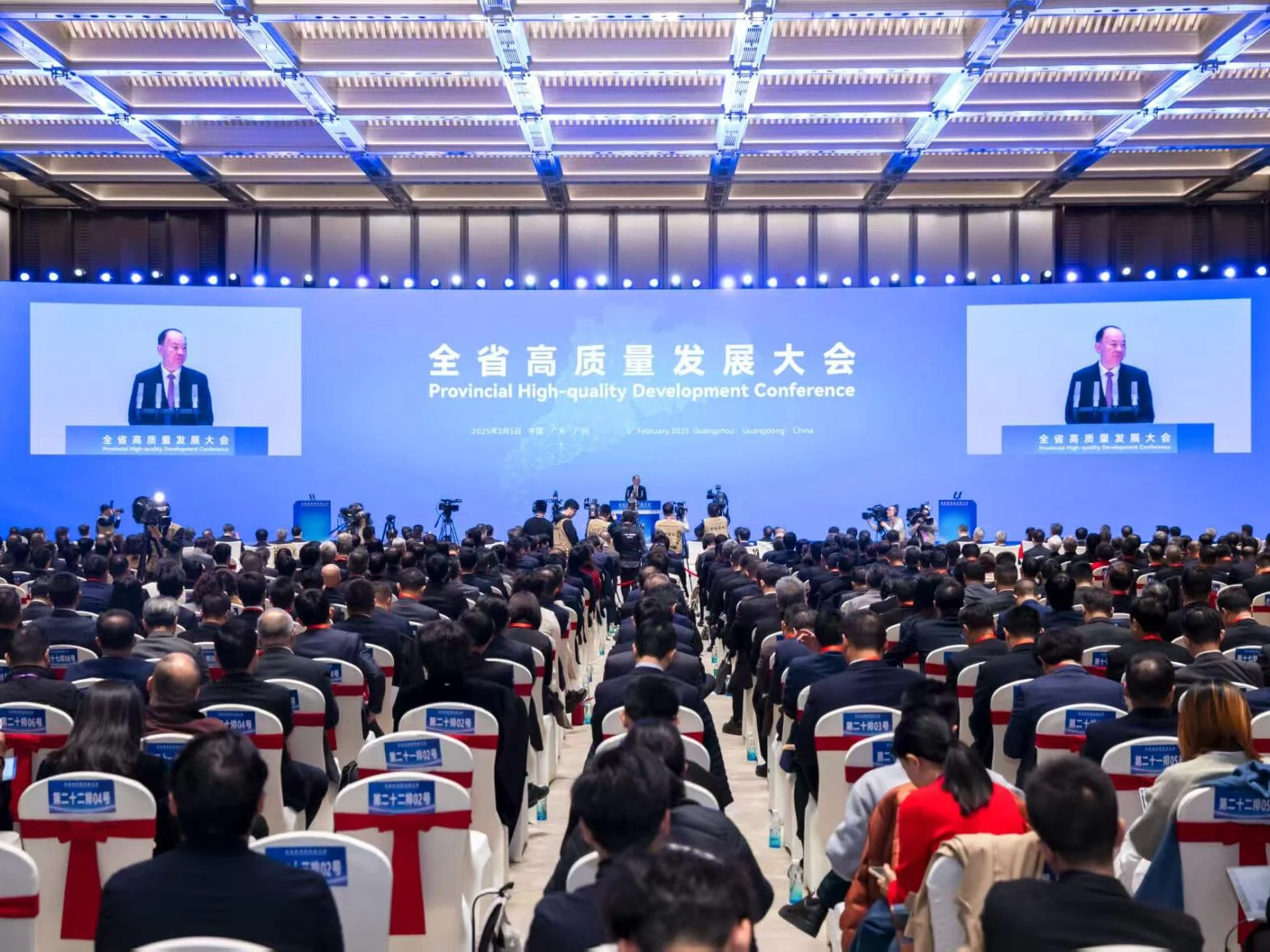
Guangdong Reinforces Industrial Modernization to Strengthen Global Competitiveness
the first working day of the Year of the Snake—Guangdong Province held a high-profile conference on high-quality development, reaffirming its commitment to industrial modernization and economic transformation. This marked the third consecutive year that Guangdong has prioritized sustainable and innovative growth in its post-Spring Festival agenda. The event brought together key government officials and industry leaders, including Guangdong Communist Party Secretary Huang Kunming and Governor Wang Weizhong, to discuss strategies for building a globally competitive modern industrial system.
Secretary Huang Kunming emphasized that Guangdong’s economic success has long been rooted in open cooperation and continuous industrial upgrading. As global technological shifts and evolving industrial landscapes reshape the world economy, the province is determined to refine its industrial base, enhance technological innovation, and foster high-growth sectors such as artificial intelligence (AI) and robotics. These efforts are part of a broader vision to position Guangdong as a leader in high-value manufacturing and innovation.
Leveraging Industrial Strengths for Future Growth
Guangdong boasts several key advantages that underpin its industrial strategy. The province is home to a comprehensive supply chain network, world-class infrastructure, and a robust talent pool. These strengths have enabled Guangdong to become a manufacturing powerhouse, but the province is not resting on its laurels. Instead, it is actively optimizing traditional industries while accelerating the development of emerging sectors.
One of the most notable initiatives unveiled during the conference is the “Action Plan for Attracting a Million Talents to South Guangdong.” This ambitious program aims to attract top-tier professionals and innovators from around the world, transforming the region into a global hub for high-tech talent and industrial innovation. By fostering collaboration between academia, industry, and government, Guangdong seeks to create an ecosystem where cutting-edge ideas can flourish and translate into tangible economic benefits.

In addition to nurturing domestic talent, Guangdong is also strengthening its ties with neighboring regions like Hong Kong and Macao. These partnerships leverage the international connectivity and financial resources of the Greater Bay Area to drive regional development. By integrating its industrial capabilities with the financial expertise and global networks of Hong Kong and Macao, Guangdong is positioning itself as a linchpin of innovation and economic growth in Asia.
Upgrading the Industrial Base for Resilience and Competitiveness
Governor Wang Weizhong outlined a detailed roadmap for upgrading Guangdong’s industrial base and enhancing supply chain resilience. He stressed the importance of investing in research and development (R&D) to advance key technologies, improve production efficiency, and reduce reliance on external inputs. To achieve this, the province plans to expand support for concept testing and pilot projects, ensuring that innovative ideas can be quickly translated into market-ready solutions.
A cornerstone of this strategy is the establishment of globally influential industrial innovation centers. These hubs will serve as incubators for breakthrough technologies and collaborative platforms for businesses, researchers, and policymakers. By fostering an environment conducive to experimentation and risk-taking, Guangdong aims to stay ahead of global trends and maintain its edge in high-value industries.
The governor also highlighted the need to address vulnerabilities in the supply chain. Recent disruptions caused by geopolitical tensions and pandemics have underscored the importance of building resilient systems that can withstand external shocks. To this end, Guangdong is working to diversify its supplier base, invest in localized production capabilities, and adopt digital tools to enhance supply chain visibility and agility.
Fostering High-Growth Sectors: AI and Robotics
Among the many sectors targeted for growth, artificial intelligence (AI) and robotics stand out as priorities for Guangdong. These fields represent the future of manufacturing and offer immense potential for driving productivity gains and creating new business opportunities. By investing in AI-driven automation and advanced robotics, the province aims to streamline operations, reduce costs, and improve product quality across various industries.
For instance, smart factories equipped with AI-powered machines can optimize production processes in real time, minimizing waste and maximizing output. Similarly, robotics can be deployed in logistics and warehousing to handle repetitive tasks more efficiently than human workers. Beyond manufacturing, AI applications in healthcare, finance, and transportation are expected to generate significant economic value and improve the quality of life for residents.
To support these developments, Guangdong is encouraging private-sector investment in AI and robotics startups. The provincial government is also partnering with universities and research institutions to conduct groundbreaking studies and develop proprietary technologies. This dual approach ensures that both grassroots innovation and institutional expertise contribute to the province’s technological advancement.
A Vision for Long-Term Sustainability
While pursuing rapid industrial modernization, Guangdong remains mindful of the need for sustainable development. The province recognizes that unchecked growth can lead to environmental degradation and social inequality, which could undermine its long-term prospects. As such, green technologies and eco-friendly practices are being integrated into industrial policies.
For example, Guangdong is promoting the use of renewable energy sources such as solar and wind power to reduce carbon emissions. It is also incentivizing companies to adopt circular economy principles, which emphasize resource efficiency and waste reduction. By aligning its industrial ambitions with environmental goals, Guangdong hopes to set an example for other regions seeking to balance economic progress with ecological responsibility.
Moreover, the province is committed to ensuring that the benefits of industrial modernization are shared equitably among its population. Programs aimed at upskilling workers and providing employment opportunities in emerging industries are underway. These efforts are designed to mitigate the impact of automation on jobs and empower individuals to thrive in a rapidly changing economy.
With its latest push for industrial modernization, Guangdong is poised to solidify its status as a global leader in high-value manufacturing and innovation. By refining its industrial base, embracing technological advancements, and fostering collaboration within the Greater Bay Area, the province is well-equipped to navigate the challenges and opportunities of the 21st century.
The strategies outlined at the February 2025 conference reflect a forward-thinking approach that balances short-term objectives with long-term sustainability. Whether through attracting top talent, upgrading traditional industries, or pioneering new technologies, Guangdong is laying the groundwork for enduring economic prosperity and international competitiveness.
As the world continues to grapple with uncertainty and change, Guangdong’s unwavering focus on innovation and resilience serves as a model for other regions striving to adapt and excel in an increasingly interconnected global economy. With steadfast leadership and a clear vision for the future, Guangdong is charting a course toward sustained success on the world stage.




